Millions across Britain enjoy partial solar eclipse
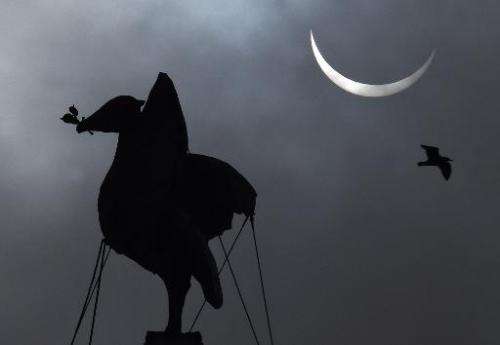
Armed with telescopes, protective glasses and home-made viewers, millions of people across Britain witnessed Friday's partial solar eclipse, though cloud cover blocked out the view for many.
Across the northwest, the Midlands, Wales, the West Country and eastern Scotland, sky-gazers saw the moon cross in front of the sun, turning the heavens gloomy.
The degree of the eclipse's totality ranged from 83 percent in Kent to 98 percent in the Hebrides.
People in Plymouth were treated to a mystical view of the celestial event through dark clouds, while in Liverpool, sun-watchers peered skywards from next to the Liver Building landmark.
Even for those under the clouds, the moon's shadow still darkened the skies.
In London, more than 500 people gathered on a rugby pitch in Regent's Park hopeful of seeing the partial eclipse—but the overcast weather obscured the sun.
Astronomy enthusiasts had set up telescopes of all sizes pointing towards the BT Tower, while others brought along home-made devices.
One man brought along a plastic colander and solar filter paper to fix over his glasses with clothes pegs, while an astrologer babbled about how the eclipse meant a time of change.
One young girl was running around with the cardboard box from a vacuum cleaner on her head, a pinhole in one end and white card in the other—a simple technique gleaned from the Internet.
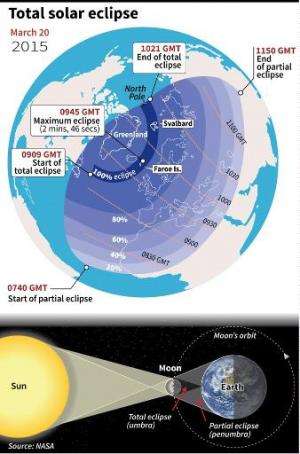
A police officer handed out special eclipse viewer glasses that were pitch black to look through, while photographers stuck astrosolar safety film over their lenses in hope of getting a shot.
Eight-year-old Londoner Rufus Aagaard, in his school shorts despite the chill, had a viewer fashioned from a cardboard tube.
"It's made of cardboard, paper, Sellotape and tin foil, and a pinprick on the end," he told AFP.
"It took about an hour to make and it projects an image into the other end.
"It was originally a parcel for some garden equipment."
The atmosphere was lively as the maximum eclipse approached at 9:31am.
The temperature felt colder and people put their hats and gloves back on.
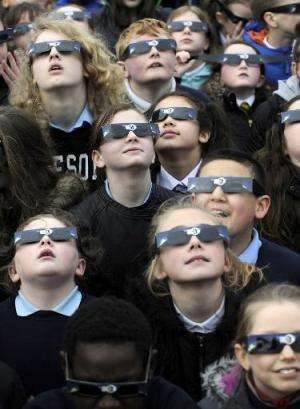
As the skies grew murkier, automatic street lights came on shortly before the maximum eclipse, then went off again five minutes after.
"We're disappointed that the cloud cover didn't break at all but it is a rare event and what's great to see is the level of interest there's been," said Simon Bennett of the Baker Street Irregular Astronomers, the gathering's co-organiser.
"There's a real buzz around things like this because there's the anticipation and not knowing exactly what you're going to see. We would all have loved perfect blue skies this morning," he told AFP.
He added: "That's the thing about astronomy whether it's daytime or nighttime: you're at the mercy of the weather. But the times when you do get clear skies and you get to see what you want always more than makes up for the things that you missed.
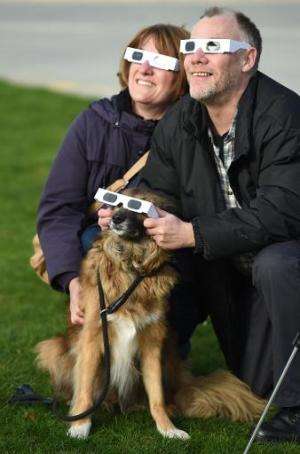
"People have come on their way to work or taken time off school. If only one or two of those get into astronomy in a big way, it's all been worth it."
The last solar eclipse of such significance in Britain occurred in August 1999, when Cornwall was treated to a total eclipse.
Britain's next "deep" partial eclipse will be in August 2026, with the next total eclipse not until September 2090.
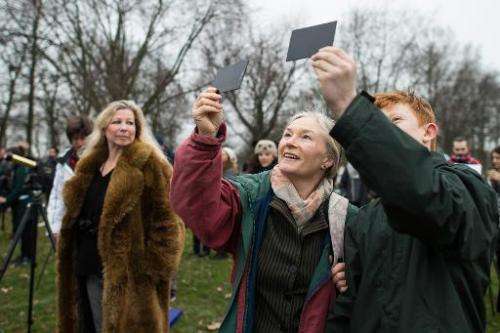
© 2015 AFP




















